 Casey Farm
Casey Farm
Casey Family’s Ties to the Land
Morey to Coggeshall to Casey
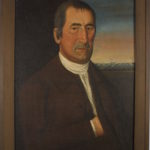
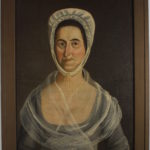
Remarkably, this land was owned by the same family for 253 years. In 1702, Joseph Morey acquired the three hundred acres on Boston Neck in the Narragansett Country of the colony of Rhode Island. In 1652, the land had been acquired from Cogninaquand, the leader of the Narragansett people, and passed through investors’ hands until Morey’s family settled permanently and set up a successful plantation that traded produce via Newport. Joseph and Mary Morey’s only daughter, Mary, inherited the land with her husband, Daniel Coggeshall of Jamestown.
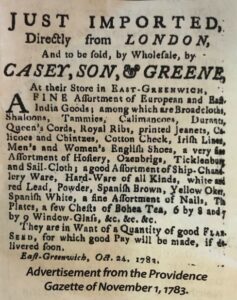 Their son, also named Daniel Coggeshall, married a woman also named Mary, Mary Wanton. By then, the family were members of the Society of Friends, or Quakers. Daniel and Mary raised eight children, and their daughter Abigail would continue ties to the land into the early nineteenth century with her husband, Silas Casey. He was a merchant who made his living by shipping dry goods up and down the East coast, to the West Indies, and to Europe. Abigail, who was the mother of their ten children, was also descended from Quakers on both sides of her family. Silas descended from three generations of Irish immigrants who settled in nearby East Greenwich where Silas continued to own property along with managing the plantation they called Boston Neck Farm. Produce from the farm supplemented the dry goods offerings of the East Greenwich firm of Casey, Son, & Greene.
Their son, also named Daniel Coggeshall, married a woman also named Mary, Mary Wanton. By then, the family were members of the Society of Friends, or Quakers. Daniel and Mary raised eight children, and their daughter Abigail would continue ties to the land into the early nineteenth century with her husband, Silas Casey. He was a merchant who made his living by shipping dry goods up and down the East coast, to the West Indies, and to Europe. Abigail, who was the mother of their ten children, was also descended from Quakers on both sides of her family. Silas descended from three generations of Irish immigrants who settled in nearby East Greenwich where Silas continued to own property along with managing the plantation they called Boston Neck Farm. Produce from the farm supplemented the dry goods offerings of the East Greenwich firm of Casey, Son, & Greene.
Boston Neck Farm
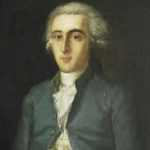
Boston Neck, named for the home city of its colonial purchasers, is a strip of land about seven miles long between the Narrow (or Pettaquamscutt) River and the West Passage of Narragansett Bay facing the island of Jamestown. First prized by Europeans as grazing land and a source of graphite, it became the perfect spot to produce goods like wool and cheese to ship overseas chiefly to the West Indies through the nearby major shipping city of Newport. In this “Narragansett Country” were many such plantations, of which Casey Farm was on the small side at three hundred acres; the largest ones were three thousand acres. Today, Casey Farm is the only intact plot left.
The family made a prosperous living until Newport was occupied by the British in 1775 when the whole area was plunged into an economic depression. After the Revolutionary War the farm’s owner was Silas and Abigail’s oldest son, Wanton Casey, who became a business partner with Silas. He had spent some time overseas in France learning the trans-Atlantic trade and time in the new territory of Ohio where he met his future wife, Elizabeth Goodale. Returning to the farm on Boston Neck in 1786 – 1787, Wanton and Elizabeth found that the international market was dried up and they decided to rent to tenant farmers. This became the pattern for the next two hundred years.
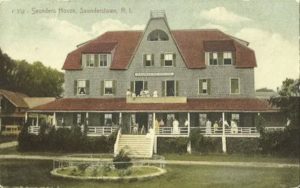 By the middle of the nineteenth century, the economy improved with people discovering the desirability of coastal Rhode Island as a resort area to escape the heat of summer in cities like New York. Again, Newport was the pinnacle of this trend, but Casey Farm’s neighborhood now named Saunderstown benefited from a boatyard just South of the farm, which evolved into a ferry service, and then the Saunders House Hotel.
By the middle of the nineteenth century, the economy improved with people discovering the desirability of coastal Rhode Island as a resort area to escape the heat of summer in cities like New York. Again, Newport was the pinnacle of this trend, but Casey Farm’s neighborhood now named Saunderstown benefited from a boatyard just South of the farm, which evolved into a ferry service, and then the Saunders House Hotel.
In 1842, the farm passed to the next generation owner, Thomas Goodale Casey, a New York resident who, with his relatives, spent summers at the farm. He took an interest in improving the farm, and, having gone to considerable difficulty to keep the three hundred acres together, Thomas Goodale Casey thought he was passing the property down whole to his nephew, Thomas Lincoln Casey. Unfortunately, Rhode Island did not recognize his New York will and property disputes continued until Thomas Lincoln Casey finally bought out or convinced relatives to give him sole ownership by the 1870s.
Washington Monument and Naumaukut

Thomas Lincoln Casey was the son of an Army general, Silas Casey. Thomas, too, served from the Civil War through the 1890s, and rose to the rank of brigadier general with his greatest accomplishment of engineering the completion of the Washington Monument. Having the head of the Army Corps of Engineers as the farm’s owner meant that the buildings were attended to with care, as were the family cemetery and the stone walls. He engineered a way to rehabilitate and flood the cranberry bog, finished the cow barn complex, and cared for all the outbuildings. The landscape included three apple orchards, one hundred elm trees, many acres for grazing sheep and cows, and a large woodlot. Thomas married Emma Weir, whom he met while attending West Point. Their sons who summered at the farm, Thomas Lincoln Casey, Jr., Harry Weir Casey, and Edward Pearce Casey, all followed in their father’s footsteps by studying engineering or architecture. The oldest and youngest sons stewarded the farm their father re-named Namaukut, making repairs and formalizing the piazza into a Classical porch.
Historic New England

Edward Pearce Casey, who attended l’Ecole des Beaux Arts in Paris and practiced architecture in New York, married Lillian Berry. Having no children and no surviving immediate family members, they decided to donate the land, farm house, and outbuildings as a working farm entrusted to the organization started by their friend, William Sumner Appleton. The Society for the Preservation of New England Antiquities, as Historic New England was then called, took up the stewardship of the land in 1955.